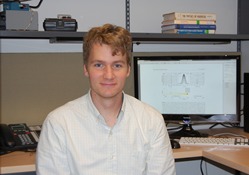Program Information
Effects of Tissue Heterogeneity On Acoustic-Based Proton Range Verification: Simulation Studies
K C Jones1*, W Nie2 , J C H Chu1 , J V Turian1 , A Kassaee2 , C M Sehgal2 , S Avery2 , (1) Rush University Medical Center, Chicago, IL, (2) University of Pennsylvania, Philadelphia, PA
Presentations
WE-G-605-6 (Wednesday, August 2, 2017) 4:30 PM - 6:00 PM Room: 605
Purpose: Acoustic-based proton range verification (protoacoustics) is a potential method for in vivo determination of the Bragg peak (BP) position, but studies have been restricted to homogeneous water measurements. In this study we investigate a CT-based method for simulating protoacoustic signal generation and propagation, and apply it to predict how heterogeneity affects the amplitude and accuracy of acoustic proton range calculation.
Methods: Two sites were chosen for simulation: liver (1 posterior proton beam, 8 sets of detectors on skin) and prostate (5 anterior proton beams, 9 transrectal detectors). In each case, the dose deposition was calculated. Based on the dose and each voxel's HU-assigned acoustic properties, the initial protoacoustic source pressure was calculated. The resulting acoustic emissions were propagated through the heterogeneous CT using the k-Wave MATLAB toolbox. For each simulation, the amplitude and arrival time of the protoacoustic wave was measured.
Results: For the liver simulation, deposition of 1.4 cGy at the BP generated 50 mPa of pressure (at the skin, 13 cm distal), a 2X lower amplitude than simulated in a homogeneous water tank. Using six sets of detectors, protoacoustic triangulation of the BP range resulted in an accuracy of 1.0 mm. For the prostate case, higher amplitudes are simulated (88-1000 mPa) because the detectors are <1 cm from the BP. For the four proton spots delivered above the transrectal detectors, protoacoustic range triangulation was accurate to ≤1.4 mm.
Conclusion: A CT-based method enables simulation of the protoacoustic signal in heterogeneous tissue. Although the speed of sound varies across heterogeneous tissue, the BP range was triangulated to within ≤1.4 mm using all the detectors. Due to attenuation and patient geometry, the protoacoustic signal transmitted in heterogeneous tissue is expected to be 1.8-4.9 times lower than that in a water tank. The presented results warrant experimental measurements in tissue.
Funding Support, Disclosures, and Conflict of Interest: Research reported in this abstract was supported by NATIONAL INSTITUTE OF BIOMEDICAL IMAGING AND BIOENGINEERING of the National Institutes of Health under award numbers R21CA205063 and F32EB021102. The content is solely the responsibility of the authors and does not necessarily represent the official views of the National Institutes of Health.
Contact Email:
